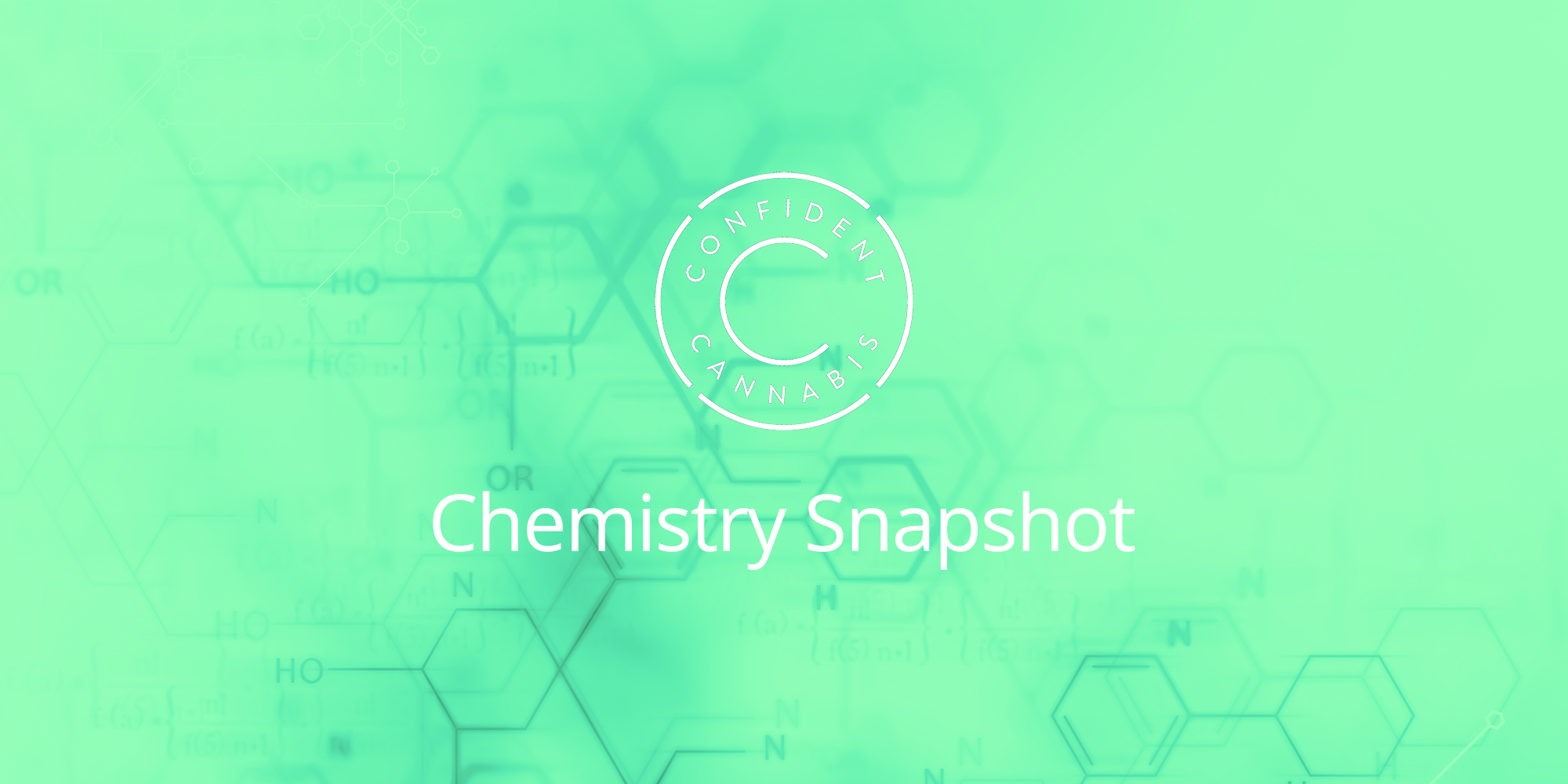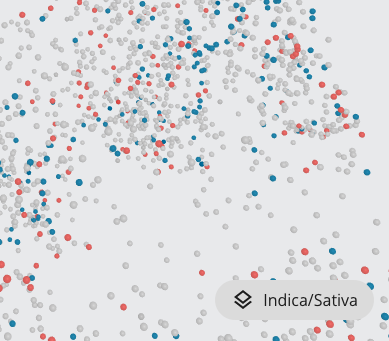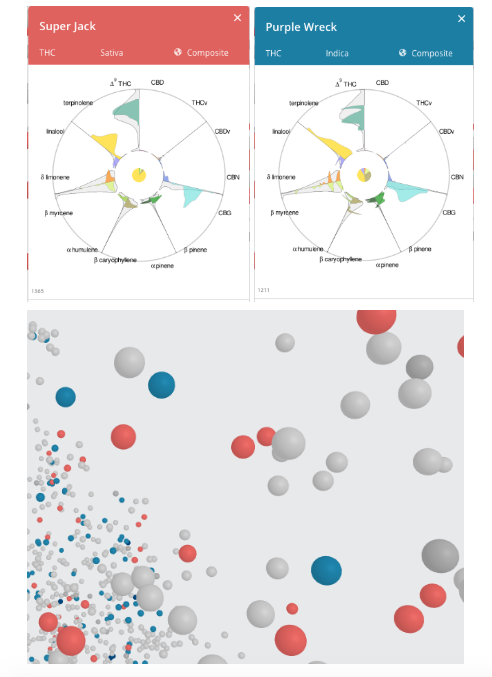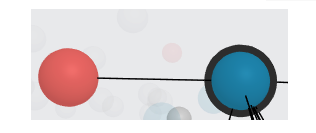We’ve been thinking about how Indica and Sativa classifications are used to describe effect when ingesting cannabis. So we’re back with a new Chemistry Snapshot to explain the differences, or lack thereof, and arm you with information to discuss this over your holiday dinner party.
Using our Connect web app, we did a chemistry analysis of flower strains labeled as Indica and Sativa to see if there are any chemical differences to be found based on those classifications alone.
In Connect, you can filter the dots to show whether the flower is classified as an Indica or Sativa strain.
As a reminder, the Dots represent strains of flower grown by cultivators in 8 different states, as well as Composites of what every cultivator is creating nationwide under a given strain name. The closer two Dots are together, the more chemically similar they are. The further apart, the more dissimilar. Make sense?
Using our Connect software you can filter the dots to show whether the plant is classified as an Indica strain or a Sativa Strain.
As you can already see, the cannabis strains, regardless of plant type, live in the same regions and are closely related to each other. The chemical reactions in each person wildly differ per strain, but once you know how you react to any given region, the dots in that region should provide you with the same effect.
If the Indica and Sativa plants are sharing a lot of the same cannabinoids and terpenes and have similar chemistry it doesn’t make sense that one will magically hype you up while the other one chills you out.
How can we ascribe effect to cannabis?
This false binary is how most cannabis is bought and sold. If you’ve been consuming cannabis for long enough, you know very well that the effects of cannabis are not just 2 extremes and shades of grey in between. There’s a wide spectrum of effects cannabis can provide, from peppy and focused to elevated and open to sedate and calm. You are just as likely to also encounter panic and anxiety, “couch-lock”, artistic and creative impulses, the munchies, and all sorts of other effects.
Clearly, thinking cannabis is either up or down negates the spectrum of effects the plant produces. Yet using Indica and Sativa assumes this very thing entirely. As we can see in Connect, the chemistries of both tend to be very similar.
So how can the same effects come from two supposedly contrasting strains?
Let’s look at some strain profiles from the same regions.
These two Composite Dots (a composite of results from all growers of these strains) occupy the same region as they share a lot of the same chemical compounds in very similar proportions. If the chemistry of these two cannabis plants are this closely related, can the effect differ?
Let’s look at two Oregon strains from the opposite side of The Cluster.
When you read branding for these strains they generally tell you that you will feel a certain way when using these strains by any ingestion method.
Leafly descriptions for Sour Diesel and Bubba Kush show the same terpene and flavor profiles but have a significantly different list of effects. Even still, budtenders and cannabis operators nationwide will tell you Indica and Sativa strains like these two produce opposite effects, not similar ones.
We have a long way to go to begin to ascribe the outcomes and effects of cannabis strains to consumers. There hasn’t been enough scientific research to study effect-based outcomes of cannabis on personal physiology, the type of plant, the strain, or the cannabinoid and terpene breakdowns.
Until science catches up with the market, how can we as an industry make sure we are being responsible when describing our products? When there is a dearth of facts available, what’s a sales and marketing team to do?
Encouraging your audience to begin journaling their cannabis journey is a good start. We really like this Goldleaf Journal as a good way to begin jotting down those effects by strain ingested. Reminding everyone that those effects vary based on body chemistry make-up is also a good start.
We’d love to hear from you. Do you think the effect can be attributed to plant classification?
You May Have Missed:
Chemistry Snapshot: Top 3 Terpenes and THC % Changes





